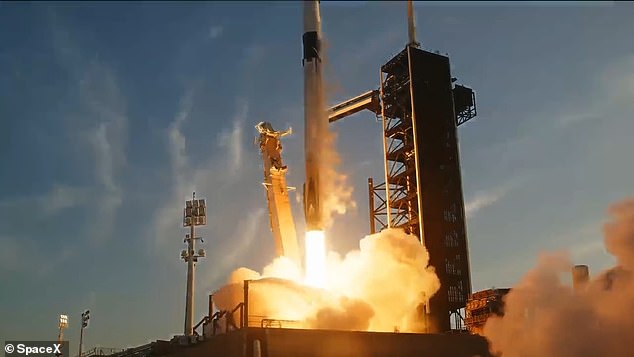
SpaceX Launches Rescue Mission to Retrieve Stranded NASA Astronauts from ISS
NASA’s Rescue Mission Launches to Bring Stranded Astronauts Home
[Image: SpaceX Falcon 9 rocket launching with caption: SpaceX’s Falcon 9 rocket lifts off, carrying NASA’s Crew-10 astronauts to the International Space Station.]
NASA’s high-stakes mission to rescue astronauts Sunita Williams and Butch Wilmore, stranded on the International Space Station (ISS) since June 5, 2023, finally launched Friday night. A SpaceX Falcon 9 rocket soared from Kennedy Space Center, carrying the Crew-10 team to replace Williams, Wilmore, and two other crewmembers. The new astronauts are set to dock at the ISS by Saturday, enabling the stranded duo to return to Earth around March 19.
A Mission Marred by Delays and Politics
Williams and Wilmore’s eight-day test flight aboard Boeing’s Starliner turned into a nine-month ordeal after technical issues grounded their return. SpaceX CEO Elon Musk claimed he offered to retrieve the astronauts months earlier but alleged the Biden Administration delayed the rescue to avoid boosting former President Donald Trump’s political image. Musk, a prominent Trump donor, reportedly clashed with officials over the timing amid the 2024 election cycle.
[Image: Astronauts Williams and Wilmore with caption: Butch Wilmore and Sunita Williams were stranded after Boeing’s Starliner faced propulsion issues.]
Crew-10 Arrives Amid Technical Hurdles
The Crew-10 mission—led by NASA’s Anne McClain and Nichole Ayers, Japan’s Takuya Onishi, and Russia’s Kirill Peskov—followed a scrubbed launch on Wednesday due to a Falcon 9 hydraulic system malfunction. “Spaceflight is tough, but humans are tougher,” McClain declared during the flight. The team will spend six months on the ISS, while Williams, Wilmore, and two others return via SpaceX’s Crew-9 Dragon capsule, docked since September.
Boeing’s Starliner Woes and Budget Constraints
NASA had awarded Boeing a $4.5 billion contract to develop Starliner as a SpaceX alternative, but the spacecraft’s propulsion failures forced the agency to rely on Musk’s Dragon capsule. NASA officials cited budget limitations for rejecting earlier rescue proposals, despite SpaceX’s offers. The agency’s $30 billion annual budget faced scrutiny after reports highlighted spending on DEI initiatives during the astronauts’ extended stay.
[Image: Crew-10 members with caption: Crew-10 includes NASA’s Anne McClain, Nichole Ayers, Japan’s Takuya Onishi, and Russia’s Kirill Peskov.]
Political Tensions and a Long-Awaited Return
President Trump reportedly urged Musk to expedite the rescue, prompting NASA to move the timeline up by two weeks. Ken Bowersox of NASA acknowledged “conversations” about political optics but denied direct involvement. Meanwhile, Williams remained pragmatic: “We’re here, we have a mission—every day is interesting in space.”
[Image: Elon Musk with Trump with caption: Musk’s political ties fueled speculation about the mission’s delays.]
The Crew-10 launch marks a pivotal step toward ending the astronauts’ unexpected odyssey, underscoring the challenges—and politicization—of modern space exploration.


